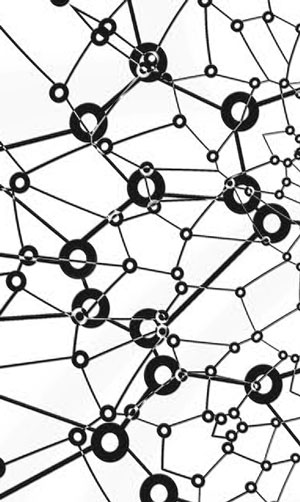High performance companies with diverse locations and significant staffing may get to the point where the usual Internet access and private line offerings just won’t get the job done anymore. At that point, you may wish to take total control of your network so that you can set the standard for performance and make upgrades as quickly as they are needed.
Sounds good, but how are you going to exercise the same control over a network that leaves your premises as you do within your facilities? Get into the network provider business yourself and install fiber to each of your facilities? Hardly. That would be cost prohibitive and way too time consuming. There’s a more reasonable approach, and that is to lease dark fiber.
 What is Dark Fiber?
What is Dark Fiber?We’re all familiar with fiber optic cables and the reliable high speed connectivity they provide. Most incumbent and competitive telecom companies now offer a wide range of bandwidth options within their service areas. Even traditional Cable companies are offering connections to their core network as an alternative to the coaxial copper drops. What is less known is that nearly all of these companies have extra fibers available within their bundles for spares, expansion and leasing. These fibers sit unlit, not installed to any network equipment.
Think about it. If you can lease a strand of dark fiber that runs very near to your business locations, it’s almost like you installed the fiber cable yourself. You pay a provider who has already gone to the trouble of installing this fiber and it is already in place. It was likely much less costly for them to do this than it would be for you, because they install many other fiber strands in the same conduit at the same time. Those strands won’t have any effect on your usage.
With dark fiber, you get access to the unlit fiber strand. You’ll need the expertise to select and install the termination equipment, but that is much easier than having to hire or contract with crews to trench the fiber conduits and negotiate the right of ways.
There Are Two Types of Dark Fiber
Dark fiber comes in two varieties, although they are closely related. The first is Metro dark fiber that is installed in cities and their related suburbs. It may be installed on poles above ground or in underground conduit. Metro fiber tends to be installed in large bundles, as there is a lot of demand for fiber optic connectivity within metropolitan areas.
The other variety of dark fiber is called long haul dark fiber. This is the fiber that runs between cities to designated points of presence. With long haul fiber, you can span the country to connect your regional offices and factories. Long haul fiber tends to use smaller glass core single mode fiber which can limit the transmission rate. It’s a tradeoff of capacity for distance.
If all of your connection requirements are within a single city, Metro dark fiber will likely get the job done. If you need to connect between cities you’ll probably need a combination of Metro and long haul dark fiber.
Dark Fiber Alternative
Dark fiber requires a budget and level of expertise that not every company can commit to, even though the control, scalability, and security are very attractive features. A related service is called dark wavelength. It is commonplace to “light” a fiber strand with a spectrum of discrete frequency lasers to create independent wavelengths or lambdas. In effect, the fiber strand becomes a set of non-interfering sub-fibers all multiplexed on the same physical strand. It is possible to lease a wavelength instead of a whole fiber at a lower cost. You still have control of the protocols used on that wavelength and it is solely dedicated to your use. If this will work for you, a dark wavelength can both save money and give you the connectivity you desire in areas when an entire strand might not be available.
Do you have a need that exceeds the typical ISP or dedicated fiber optic bandwidth service offerings? If so, explore the possibility of leasing a dark fiber or dark wavelength now.

